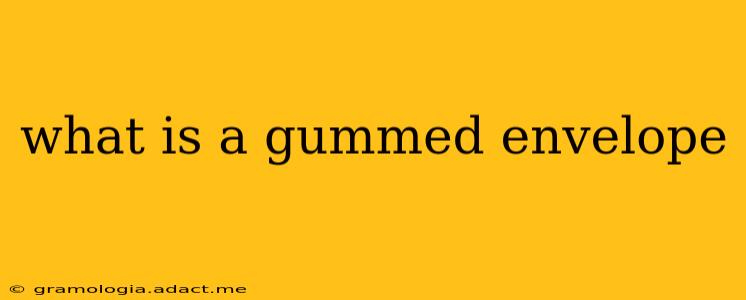What is a Gummed Envelope?
A gummed envelope is a type of envelope that features a strip of adhesive, typically made from gum arabic or a similar substance, along one edge or flap. This adhesive strip is activated by moistening it with water, allowing the envelope to be sealed securely without the need for additional glue or tape. They are a classic, traditional method of sealing envelopes, although less common in modern times due to the prevalence of self-adhesive options.
How does a gummed envelope work?
The process is simple: you moisten the gummed strip with your tongue or a wet sponge, and then press the moistened strip firmly against the envelope flap to create a secure seal. The gum activates upon contact with moisture, creating a bond that holds the envelope closed.
What are the advantages of using gummed envelopes?
- Security: A properly sealed gummed envelope offers a good level of security, as it's more difficult to open discreetly than a self-seal envelope. The seal is generally more robust, deterring tampering.
- Traditional Aesthetic: Gummed envelopes have a classic and elegant look, appealing to those who appreciate a more traditional aesthetic. They can enhance the feel of a handwritten letter or formal invitation.
- Cost-effective (sometimes): Depending on the quantity purchased, gummed envelopes can be a more cost-effective solution than self-sealing options, especially for bulk orders.
What are the disadvantages of using gummed envelopes?
- Requires Moistening: The need to moisten the gummed strip can be inconvenient, especially if you're in a hurry or don't have access to water.
- Messiness: Moistening the gummed strip can be messy, potentially leading to sticky fingers or smudging on the envelope.
- Drying Time: There's a short drying time required for the gum to fully set, which means you need to wait a few seconds before the seal is completely secure.
- Less Common: Finding gummed envelopes can be more challenging than finding self-sealing options in many retail stores.
What are gummed envelopes used for?
Traditionally, gummed envelopes were primarily used for sending letters and other correspondence. While their popularity has decreased, they remain a viable option for:
- Formal Invitations: The classic look of gummed envelopes can enhance the feel of a formal invitation, wedding announcement, or other special occasion correspondence.
- Greeting Cards: Some high-quality greeting cards still utilize gummed envelopes to maintain a premium feel.
- Archiving Documents: The secure seal can be advantageous for storing important documents that need to remain sealed.
- Applications requiring a tamper-evident seal.
What is the difference between gummed envelopes and self-seal envelopes?
The main difference is the sealing mechanism. Gummed envelopes require moistening a gum strip, while self-seal envelopes have a pre-applied adhesive strip that seals upon pressure. Self-seal envelopes are generally more convenient, while gummed envelopes offer a more secure, traditional seal.
Are gummed envelopes still used today?
While less common than self-seal envelopes, gummed envelopes are still used, particularly for formal occasions and applications requiring a more secure seal. Their traditional aesthetic also appeals to some users.
This comprehensive guide provides a thorough explanation of gummed envelopes, addressing common questions and providing valuable insights into their use and advantages/disadvantages.
